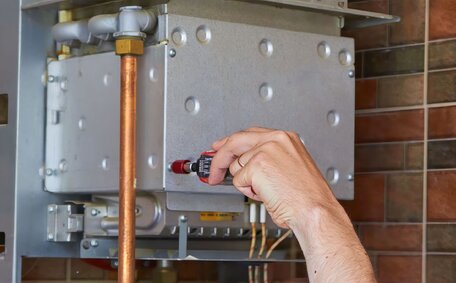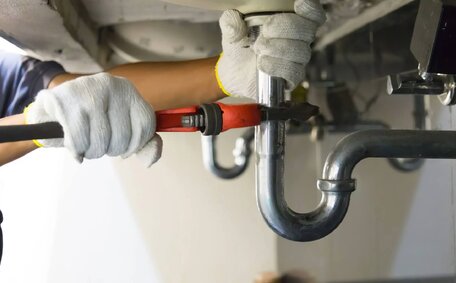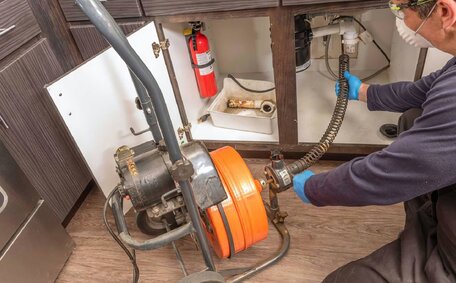What is Gas Line Pressure Testing and Why is it Important?
Gas line pressure testing is the process of checking gas supply systems for leaks or other issues by applying pressurised air, gas, or water. It ensures that gas lines can safely withstand and operate at required pressure levels without dangerous gas leaks.
It’s imperative to conduct regular pressure tests on all gas lines, including those for natural gas and propane, to ensure the safety of buildings, not just in Dulwich Hill, Sydney, but everywhere. Well-maintained gas pipelines are essential to prevent Leaks that can cause serious harm such as explosions, fires, carbon monoxide poisoning, or other threats.
Various methods are routinely used for pressure testing:
- Performing a pressure test for a new gas line to ensure correct setup and safety
- Tests on existing gas systems to gauge the compliance of older pipelines with contemporary codes
- Alteration tests for modified or extended gas piping
During a pressure test, gas systems are filled and pressurised to levels typically 3 PSI above normal operating conditions. Pressure gauge instruments are pivotal in detecting any reductions in pressure that surpass expected durations, indicating reductions below permissible leakage rates. A rapid pressure drop signifies a gas leak that necessitates prompt repair.
Thorough pressure tests are essential to identify and mitigate risks, ensure regulatory compliance, and guarantee the ongoing safe operation of your home’s gas infrastructure.
Understanding Testing Methods and Equipment
There are two main methods used for gas line pressure testing:
Pneumatic Testing
Pneumatic pressure testing inflates gas lines with inert gases such as nitrogen, effectively pinpointing low-pressure areas during a thorough testing procedure. It is typically used for low and medium pressure systems under 200 PSI.
Equipment needed includes:
- Compressed gas cylinders and regulators
- Pressure gauges
- Testing apparatus like plugs, caps, and fittings
Pneumatic testing is a safer, more pragmatic method for both residential and commercial gas networks.
Hydraulic Testing
Hydraulic pressure testing applies water pressure to evaluate the durability of gas lines under elevated pressures. It can validate integrity at higher pressures exceeding 200 PSI.
Equipment includes:
- Water pump
- Pressure gauges
- Water tank
- Piping accessories
Ideal for high-pressure industrial contexts, hydraulic testing is equally adept at identifying leaks in gas lines at assorted pressures.
Familiarity with these methods and having the right equipment ensure the testing of gas lines is both safe and compliant.
Key Safety Steps to Follow
Conducting pressure testing gas safely is crucial. Technicians must follow crucial safety measures during gas line pressure testing:
Inspect Equipment
Before testing, thoroughly inspect the entire setup, including gauges and fittings, for any defects. Ensure that the testing equipment is accurately calibrated and fully operational.
Review Safety Procedures
Examine local Sydney gas code guidelines and safety measures to ensure the setup adheres to regulations. Understand all necessary compliance steps.
Secure the Area
Clear the area around the gas piping system of any debris, cordon it off and display warning signs to deter unauthorised access.
Monitor the System
Closely monitor the pressure gauges for any unexpected pressure drops during the test. Be prepared to rectify any leaks if the pressure reading falls below the expected level.
Document the Process
Maintain meticulous records of the preparation process, testing gas methods, pressure readings, outcomes, and subsequent repairs. Accurate documentation is essential.
Adhering strictly to safety protocols minimises risks and ensures that gas line pressure tests are carried out effectively, in accordance with regulations, and safely.
How to Perform a Pressure Test
Performing a thorough pressure test gas line involves a series of key steps:
1. Prepare Equipment and Area
Assemble all required equipment such as pressure gauges, plugs, a gas source, and fittings for the testing of gas lines. Inspect all gear ensuring proper calibration and functionality. Ensure the piping test area is secured, controlling access and advising of the amount gas pressure being tested.
2. Isolate and Pressurise
Isolate the section of new gas infrastructure needing testing. Introduce pressurised gas slowly, increasing to create pressure over standard operating pressure by 3-5 PSI. New installations might need a higher starting PSI.
3. Monitor Pressure Gauge
Diligently observe the gauge’s pressure readings during the test, which can range from less than 10 minutes to overnight, depending on the pipeline’s size. Ensure pressure remains stable within allowable pressure loss rates per pipe diameter:
| Pipe Size | Allowable Loss |
| 0.5 inches | 3 PSI |
| 1 inch | 2 PSI |
| 1.25 inches | 1.5 PSI |
4. Check for Leaks
Exceeding the allowable pressure drop rates suggests a possible leak. Locate source using leak detector fluid or other methods. Seal leaks before retesting.
5. Document Results
Record all test details including procedures, readings, repairs, retests, and final outcomes. Update compliance paperwork as required.
Following proper professional gas gas line pressure testing protocols in Sydney ensures infrastructure safety and regulatory adherence.
Interpreting Test Results and Identifying Leaks
Interpreting the results of a gas line pressure test provides critical insights into the system’s integrity. There are two key factors:
Pressure Loss Rate
If pressure declines faster than the allowable loss rate based on pipe diameter, a leak likely exists. Immediate investigation and repair are necessary before retesting.
Final Pressure Level
The concluding pressure reading must persist at the pressure least expected or higher, to align with the pertinent norms. Dropping below indicates leaks requiring attention.
Technicians employ various techniques that effectively carry out testing natural gas lines to precisely pinpoint leaks:
- Leak detection fluids
- Electronic devices to test gas presence and identify leaks
- Pressure loss isolation testing
All leaks must be properly sealed. Extensive drops may indicate larger underlying issues needing pipe replacement.
Failed tests mean the gas system fails to meet legal safety requirements in Sydney. Compliance documentation must note required repairs. The line must be retested after fixes until successfully passing.
Properly interpreting results ensures issues get addressed before gas infrastructure is declared safe and operational.
Overcoming Common Challenges
There are some common hurdles associated with conducting gas line pressure tests:
Difficulty Reaching Test Pressure
Factors like high-volume piping, old galvanised steel, or excess fittings may make pressurising difficult. Start low and increase gradually while checking for leaks. Segment intricate networks into individual section gas areas for focused isolation testing.
Pinpointing Small Leaks
Minor leaks can still be dangerous but difficult to locate. Use specialty leak detectors and test smaller sections separately. Pressure loss isolation can also find smaller leaks affecting rate drops.
Working With Old Piping
Our skilled plumbers are equipped with the right methods, tools, and expertise to navigate testing challenges with ease, ensuring compliance and safety.
Maintenance Tips After Testing
Post gas line pressure testing, adhering to crucial maintenance procedures is essential for sustained safety and integrity:
Conduct Regular Visual Inspections
Regularly inspect appliances such as water heaters, checking their gas connections for wear, leaks, corrosion, or unusual noises. Annual inspections are recommended.
Maintain Proper Operating Pressure
Regularly monitor your gas meter to ensure the pressure stays within the standard PSI range, alerting you to any potential leaks. A sudden pressure drop in your gas may suggest the presence of leaks, necessitating an immediate response.
Schedule Follow-Up Pressure Tests
Periodical re-testing of your gas pipes, especially after significant incidents, ensures the upkeep of their structural integrity. How frequently you test depends on the age and material of the pipes.
Consider Professional Assessments
Our certified gas fitter can thoroughly evaluate your gas installations, perform required pressure tests, and identify any maintenance requirements.
Consistent gas line inspections and re-testing ensure the ongoing safe operation. Contact our team anytime for maintenance checks or repairs to gas or other plumbing systems.






